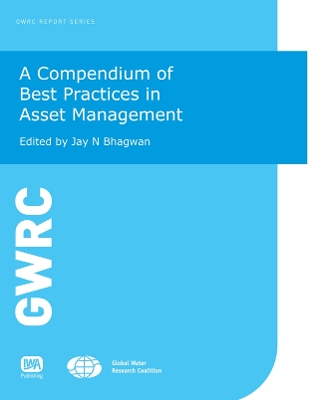GWRC Report
1 total work
A Compendium of Best Practices in Asset Management
Published 14 October 2012
Available as eBook only.
The increased scientific knowledge of the management of water infrastructure, is forcing the application of radical and innovative techniques, that goes beyond seen pipes, tanks and pumps as infrastructure in the ground, but as assets which have an operational life and effective and efficient use of these component impacts on our ability as water providers and utilities to continue to provide high quality, high assurance water and sanitation services at reliably and affordably. They are now being seen as the lifeblood of the community, since they protect public health and they insure that local economies and national economies continue to run. Mounting evidence internationally suggests that the integrity of drinking water and wastewater infrastructure is at risk without a concerted effort to improve the management of key assets - pipelines, treatment plants, and other facilities - and a significant investment in maintaining, rehabilitating, and replacing these assets.
The application of asset management principles in the global water industry is of particular interest at the present time due to pressures from governments, regulators, shareholders and consumer groups in many countries to provide cost-effective and sustainable water services at least cost to customers and the environment. Recognising that the application of good science and innovation was on a rapid incline, it was deemed necessary to capture these novel and creative applications, techniques and process which were contributing to this new area of importance.
This GWRC Compendium of Best Practices in Asset Management demonstrates the advancements and progress being made in applying innovative and novel techniques and processes in the management of water and sanitation infrastructure. The cases highlight examples in different countries on strategic initiatives at the highest level, through the development of the policy and legislation towards ensuring that asset management becomes a legal requirement for all water services providers; innovation techniques for infrastructure risk assessment; decision- making techniques for capital investments; studies on the implementation of Asset management in utility practice, the use of GIS and IT technology, and the various little techniques of meter replacement, pressure management, continuous leak detection and rehabilitation of infrastructure.
The increased scientific knowledge of the management of water infrastructure, is forcing the application of radical and innovative techniques, that goes beyond seen pipes, tanks and pumps as infrastructure in the ground, but as assets which have an operational life and effective and efficient use of these component impacts on our ability as water providers and utilities to continue to provide high quality, high assurance water and sanitation services at reliably and affordably. They are now being seen as the lifeblood of the community, since they protect public health and they insure that local economies and national economies continue to run. Mounting evidence internationally suggests that the integrity of drinking water and wastewater infrastructure is at risk without a concerted effort to improve the management of key assets - pipelines, treatment plants, and other facilities - and a significant investment in maintaining, rehabilitating, and replacing these assets.
The application of asset management principles in the global water industry is of particular interest at the present time due to pressures from governments, regulators, shareholders and consumer groups in many countries to provide cost-effective and sustainable water services at least cost to customers and the environment. Recognising that the application of good science and innovation was on a rapid incline, it was deemed necessary to capture these novel and creative applications, techniques and process which were contributing to this new area of importance.
This GWRC Compendium of Best Practices in Asset Management demonstrates the advancements and progress being made in applying innovative and novel techniques and processes in the management of water and sanitation infrastructure. The cases highlight examples in different countries on strategic initiatives at the highest level, through the development of the policy and legislation towards ensuring that asset management becomes a legal requirement for all water services providers; innovation techniques for infrastructure risk assessment; decision- making techniques for capital investments; studies on the implementation of Asset management in utility practice, the use of GIS and IT technology, and the various little techniques of meter replacement, pressure management, continuous leak detection and rehabilitation of infrastructure.
